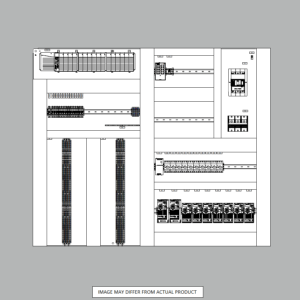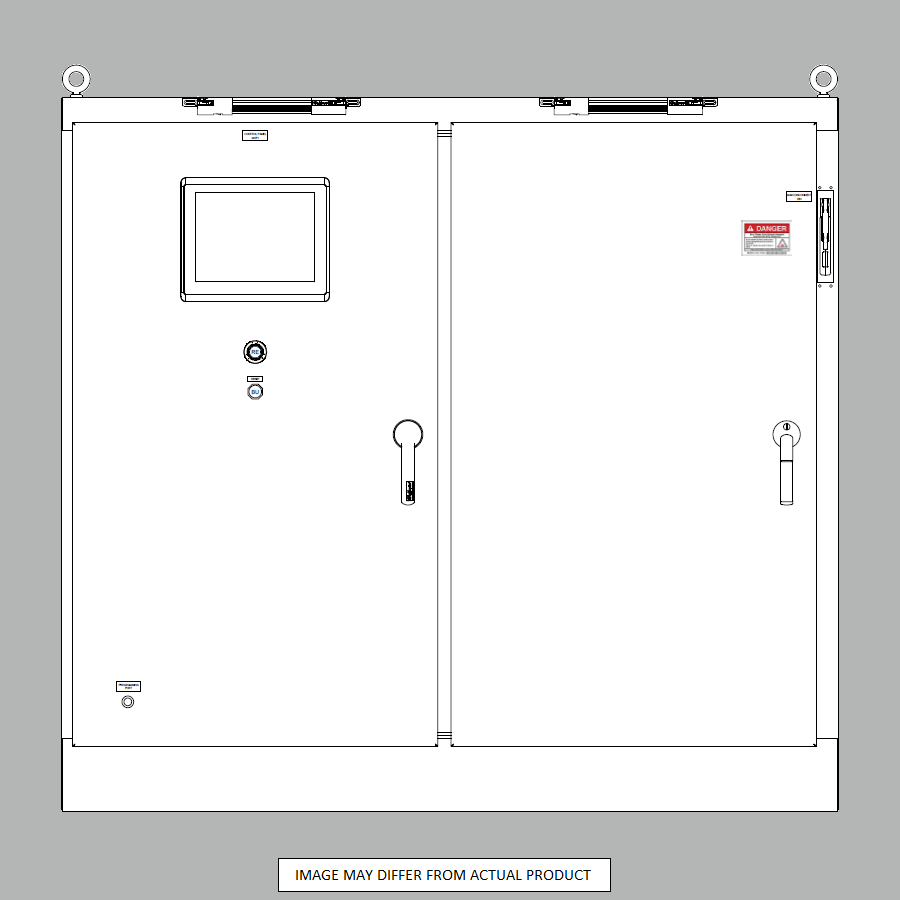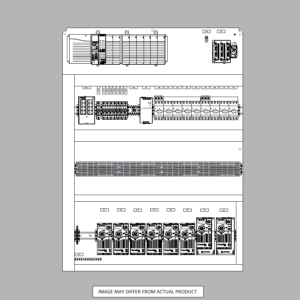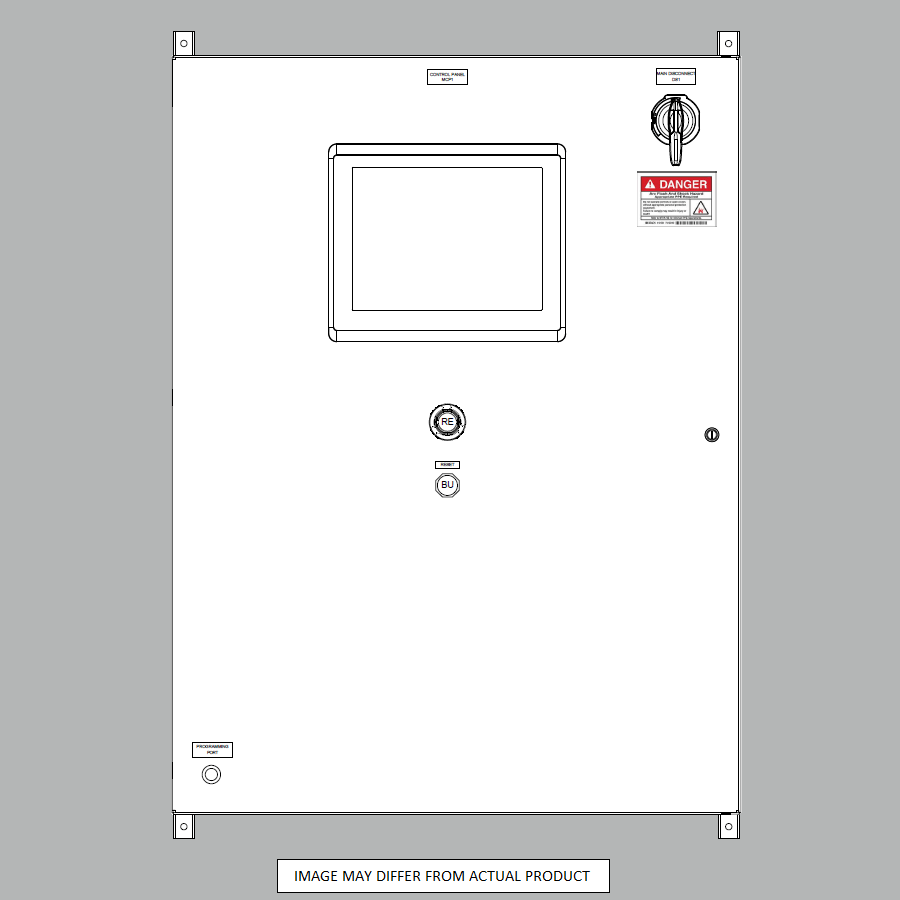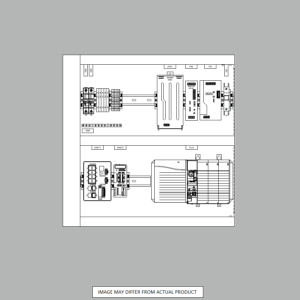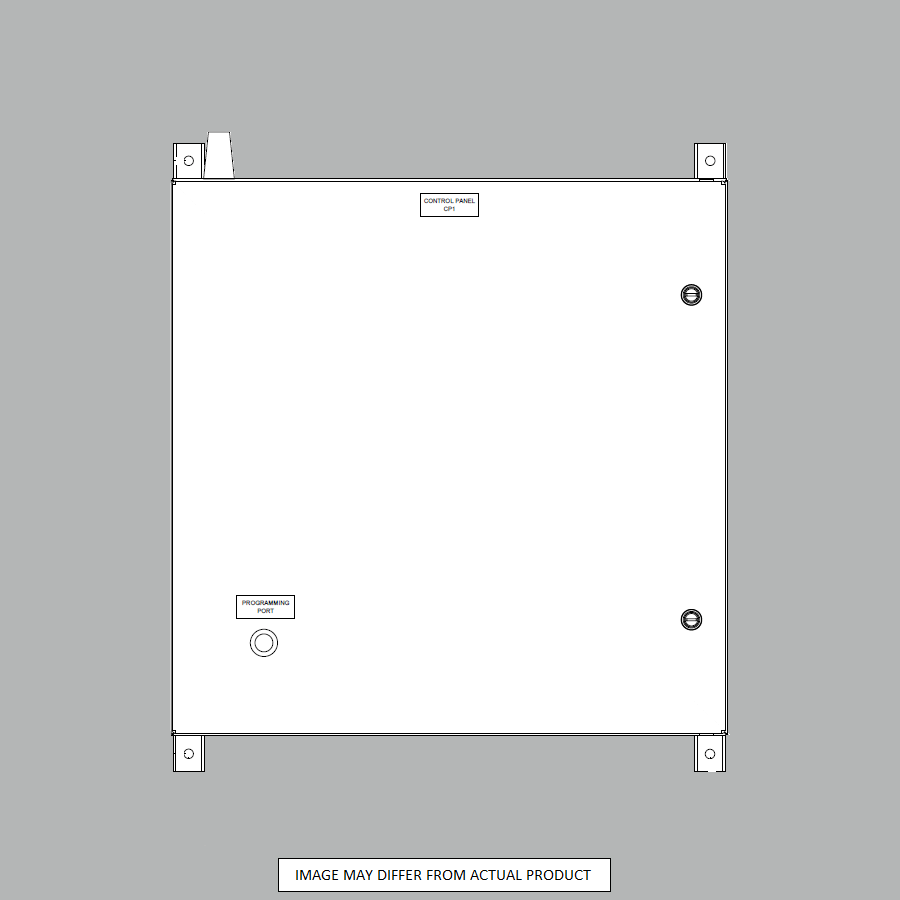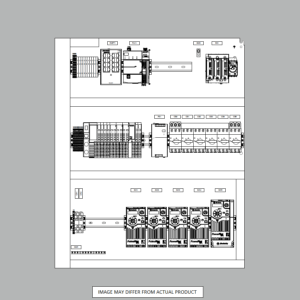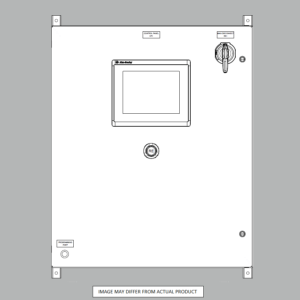Maximize Productivity with Robotics Integration Solutions
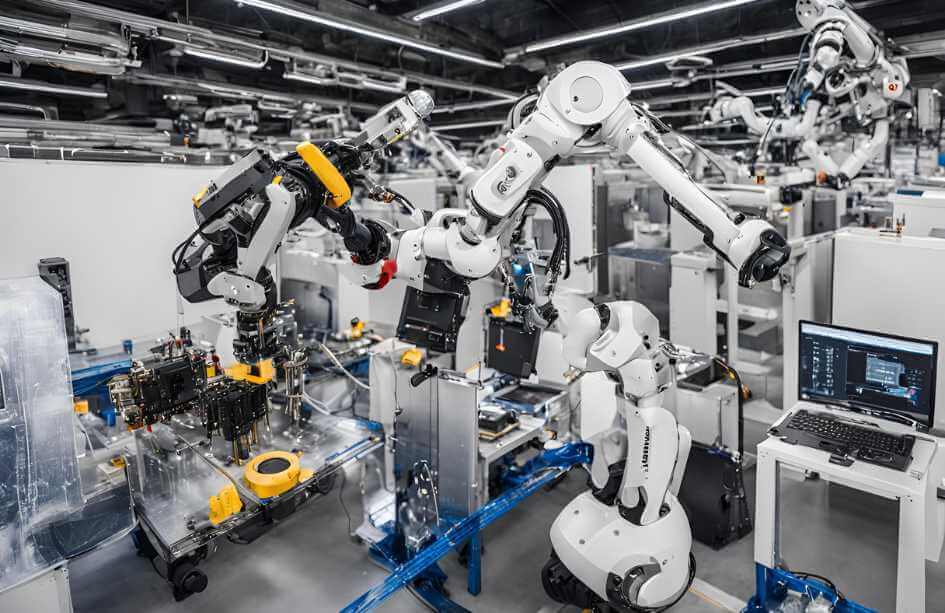
Robotics System Integration Image generated using Canva
Welcome to the future of industrial automation! Discover how robotics integration can transform production lines, boost productivity, and streamline operations. This guide will reveal the ins and outs of integrating robots into your business, providing valuable insights and practical tips to ensure a successful transition.
What is Robotics Integration?
Robotics integration involves incorporating robots into your existing production line or creating new automated processes. This process can significantly enhance your manufacturing capabilities by leveraging advanced technology to improve efficiency, reduce errors, and lower costs.
Integrating robots (also known as Robotic Process Automation) allows you to streamline tasks like material handling, welding, palletizing, and pick and place operations. These systems offer unparalleled precision and repeatability, making them ideal for various industries, from automotive to electronics.
Robotics systems integration is a critical aspect of modern manufacturing, which includes also manufacturing automation. Robotics systems, including industrial robotic systems and multi-axis robotic arms, can perform complex tasks accurately and consistently. This integration requires the expertise of experienced integrators who can design and implement customized solutions to meet specific production needs.
Why Invest in Robotic Integration?
Investing in robotic integration can yield numerous benefits for your business:
- Increased Productivity: Robots can operate 24/7, increasing throughput and ensuring consistent production rates.
- Reduced Labor Costs: Automating repetitive tasks reduces the need for manual labor, helping to decrease production costs.
- Improved Quality: Robots offer high precision and repeatability, enhancing product quality and reducing defects.
- Enhanced Safety: By taking over dangerous tasks, robots help improve safety and ergonomics in the workplace.
Robotic integration allows companies to remain competitive by adopting advanced automation solutions that improve cycle times and quality. Industrial robotic integration is not just about adding machines to the production line; it enhances manufacturing.
How to Choose the Right Robotics Integrator
Selecting the right robotics integrator is crucial for a successful integration project. Here are some key considerations:
- Experience and Track Record: Look for integrators with a proven track record in your industry and experience in integrating robots for similar applications.
- Technical Expertise: Ensure the integrator has the technical skills to design and build custom automation solutions tailored to your needs.
- Customer Support: Choose an integrator that offers comprehensive support, from initial consultation to post-installation maintenance.
An experienced robotics integrator like us at Automation Ready Panels can help you achieve seamless integration and maximize the benefits of robotic automation. Integrators usually partner with robotics system manufacturers like FANUC, Yaskawa, ABB, and Universal Robots. We connect these manufacturer robots to specific systems to make everything around the robot perform its required function, usually creating a product or enhancing its process.
Key Steps in the Robotic Integration Process
The robotic integration process involves several critical steps:
- Assessment and Planning: Evaluate your current processes to determine which areas can benefit from automation. Develop a detailed integration plan that outlines your goals and requirements.
- Design and Build: Work with your integrator to create a custom robotic system that meets your needs.
- Installation and Testing: Install the robotic system and conduct thorough testing to ensure it operates correctly and meets your performance standards.
- Training and Support: Train your staff to operate and maintain the new system effectively. Ongoing support is essential to address any issues that arise.
Successful robotic integration requires careful planning, collaboration, and ongoing support. Before fully implementing the system, it’s important to include a proof of concept in the integration process to validate its responsiveness.
Common Challenges in Robotic Integration and How to Overcome Them
Robotic integration can present several challenges:
- Technical Issues: Integrating robots into existing systems can be technically complex. Work closely with your integrator to address compatibility issues and ensure a smooth integration process.
- Cost: The initial investment in robotic systems can be high. However, the long-term benefits often outweigh the costs. Consider financing options and government incentives to manage expenses.
- Employee Resistance: Some employees may resist change. To gain their support, training must be provided, and the benefits of automation must be communicated.
By anticipating and addressing these challenges, you can ensure a successful integration. Industrial robotic systems must be carefully calibrated to fit seamlessly into your existing operations.
Types of Industrial Robots and Their Applications
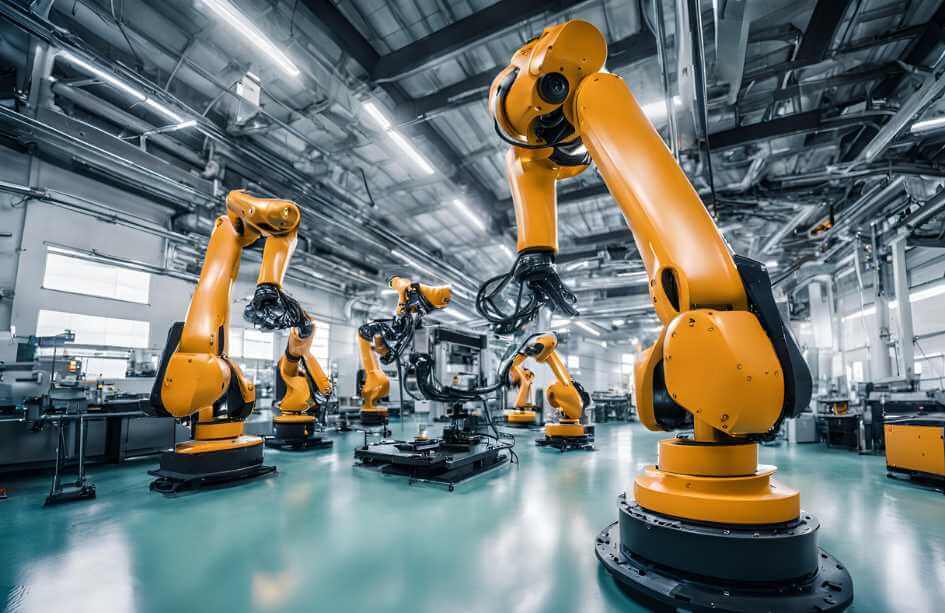
Industrial Robots in Manufacturing Factories. Image generated with Canva.
There are several types of industrial robots, each suited to different applications:
- Articulated Robots: These robots have multiple joints and are highly versatile, making them ideal for tasks like welding, assembly, and material handling.
- SCARA Robots: SCARA robots are perfect for pick-and-place tasks, assembly, and packaging.
- Delta Robots: Known for their speed and precision, delta robots are often used in high-speed sorting and packaging applications.
- Collaborative Robots (Cobots): Cobots work alongside humans, enhancing safety and productivity in various tasks.
Choosing the right type of robot depends on your specific needs and applications. Robots are designed to perform particular tasks, such as automated guided vehicles for material transport and multi-axis robotic arms for complex assembly operations.
The Role of Collaborative Robots (Cobots) in Modern Manufacturing
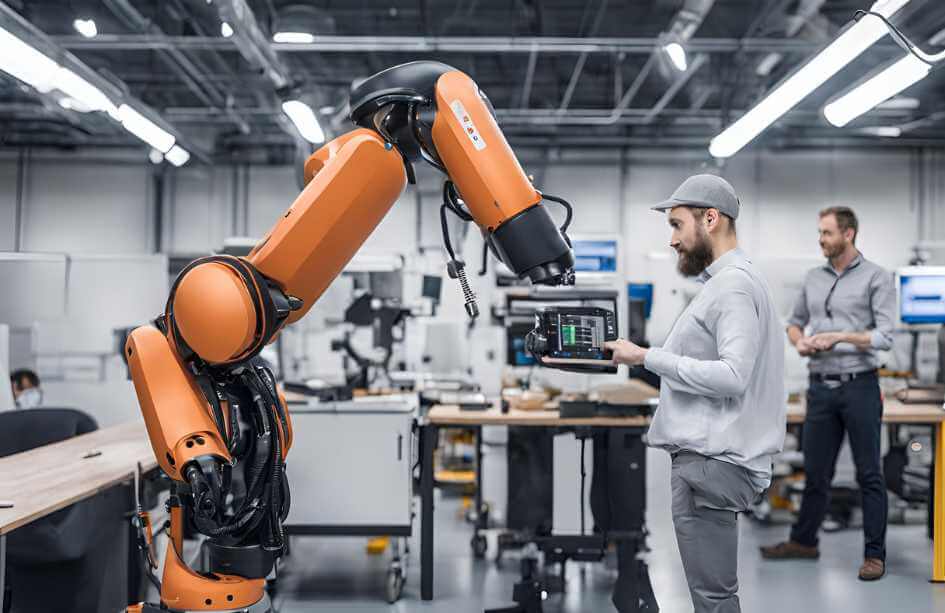
Collaborative Robots with human operator. Image generated with Canva
Collaborative robots, or cobots, are designed to work safely alongside human workers. They are typically smaller and more flexible than traditional industrial robots, making them ideal for tasks that require human-robot collaboration.
Cobots can be used in various applications, including assembly, packaging, and material handling. Their ease of use and adaptability make them popular for companies looking to enhance their automation capabilities without completely replacing human workers.
Collaborative robotics systems are designed to perform tasks with human operators in mind, ensuring safety and efficiency. These systems are particularly useful in industries where flexibility and adaptability are crucial.
Safety and Ergonomics in Robotic Integration
Safety and ergonomics are critical considerations in robotic integration:
- Risk Assessment: Conduct a thorough risk assessment to identify potential hazards and implement mitigation measures.
- Training: Ensure all employees are trained to operate the robotic systems safely.
- Ergonomic Design: Design workstations and processes to minimize physical strain and enhance workers’ comfort.
Prioritizing safety and ergonomics can create a safer and more productive work environment. These considerations are essential to protecting workers and ensuring compliance with industry standards.
Future Trends in Robotics and Automation
The future of robotics and automation is bright, with several exciting trends on the horizon:
- AI and Machine Learning: Integrating AI and machine learning with robotics will enable smarter, more adaptable automation systems. These advancements will help achieve higher levels of efficiency and customization.
- Autonomous Mobile Robots (AMRs): AMRs are set to revolutionize material handling by providing flexible and scalable solutions. They can navigate complex environments and perform tasks without human intervention.
- Collaborative Robotics: Cobots will continue to grow, enhancing human-robot collaboration in various industries. These robots are designed to work safely alongside humans, making them ideal for multiple applications.
An experienced robotics integrator like us at Automation Ready Panels can help you achieve seamless integration and maximize the benefits of robotic automation. Staying ahead of these trends can help your business leverage the latest automation technology to improve efficiency and remain competitive.
Summary of Key Points
- Increased Productivity: Robots can operate 24/7, increasing throughput.
- Reduced Labor Costs: Automation reduces the need for manual labor.
- Improved Quality: High precision and repeatability enhance product quality.
- Enhanced Safety: Robots take over dangerous tasks, improving workplace safety.
- Choosing the Right Integrator: Look for experience, technical expertise, and strong customer support.
- Types of Robots: Articulated, SCARA, delta, and collaborative robots have unique applications.
- Safety and Ergonomics: Prioritize safety and ergonomic design to protect workers.
- Future Trends: AI, AMRs, and collaborative robotics will shape the future of automation.
By understanding and implementing these principles, your business can successfully navigate the journey of robotic integration and reap the benefits of advanced industrial automation. Ensure every customer gets the necessary technology to improve their processes and achieve their manufacturing goals. With the right integration partner and focusing on modern advancements, you can optimize your production line and stay ahead in the competitive manufacturing world. Contact us today at Automation Ready Panels for your robotic integration needs.
-
Large Process Automation: Panelview 5000, ControlLogix 5580
$24,073.00 Select options -
Small Process Automation: Panelview 5000, ControlLogix 5580
$20,321.00 Select options -
Small Process Automation: ControlLogix 5580, UPS Battery Backup, Cellular Modem
$18,999.00 Select options -
Advanced Automation: Panelview 5000, Safety CompactLogix 5380
$10,269.00 Select options


